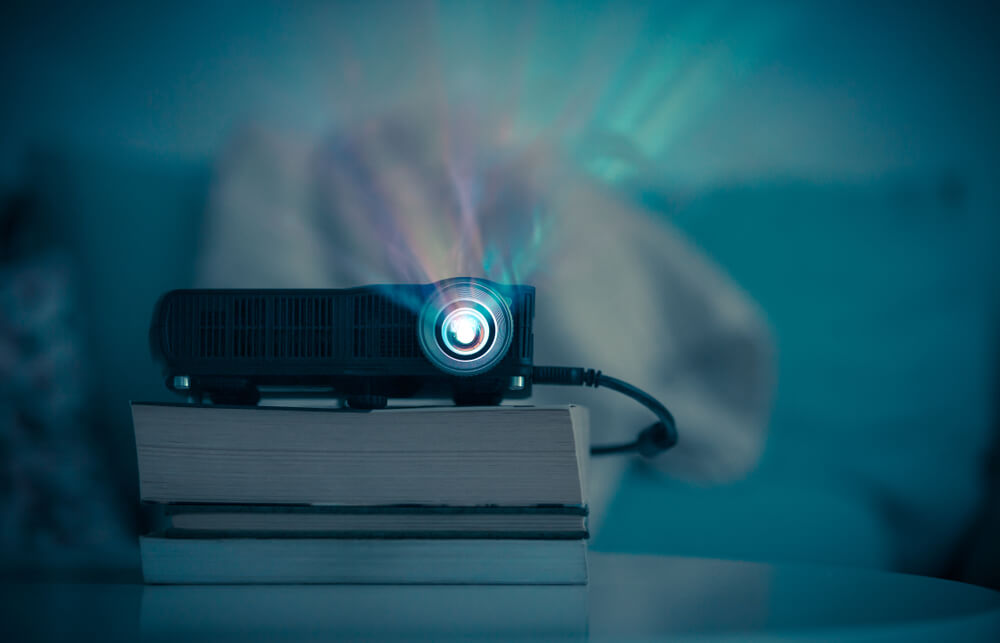
Watching your favorite flicks in the comfort of your own home has huge appeal. You can pause the movie whenever you want, you can have any snack you like, and it’s a great way to have family time without spending money.
While setting up a home theater may not be the most complicated project, it does require some specialist knowledge to set up your theater in a way that’s optimum for viewing movies.
Depending on where the theater is situated and the type of room it’s in, you will find that certain conditions, such as sunlight, will affect how well you can view the screen. This is where lumens come in.
The amount of lumens determines how bright and clear the image is when you play a movie. They’re an essential aspect to consider when looking at which home theater system to purchase.
What Are Lumens and What Do They Do?
Lumens is the measurement of the brightness of the picture that your projector produces. This measurement is called the “luminous flux.” Essentially, it is the strength of the light the viewer observes.
You have lumens and ANSI lumens (American National Standards Institute). ANSI lumens are more accurate because they’re measured using more rigorous methods. Older projectors will have been measured using lumens, so you can’t always rely on the accuracy of their claims. All new projectors will have been measured using ANSI lumens. Rest assured that ANSI lumens are the more accurate and realistic measurement.
What Affects the Amount of Lumens you Need?
The number of lumens you require will differ depending on your intended setup. Factors that affect this are:
- Content
- Screen resolution
- Ambient light
Content
The starting point for the number of lumens required depends on the purpose of your home theater. For the majority, it will be primarily for viewing movies. However, there are also many avid gamers out there who want a home theater for this purpose. Some may also use their setup for work purposes, including video calling, in which case a portable option may be more suitable.
- Watching movies/TV: For this purpose, you want a starting point of 2,000 lumens upwards
- Gaming: For gaming, a minimum of 2,000 lumens is also recommended
- Portable setup: Since the resolution is lower on these devices, a minimum of 1,500 is recommended
Screen Resolution
To get the clearest resolution, the intended purpose of your home theater also plays an important role:
- If you’re using your setup for watching movies and playing video games, the gold standard resolution is 1080p (1920 x 1080 pixels)
- 4k is set to take over 1080p in the near future so keep this in mind
- Portable projectors are typically 840 x 840 resolution. This is ideal for work purposes. If you also want it for viewing movies, you need to check the resolution capabilities thoroughly. Not all portable projectors support good enough resolution for working.
Generally, the more resolution you need, the more lumens you require to keep that image sharp.
Ambient Light
Ambient light is the amount of natural light that enters the home theater. The more light you have, the brighter the screen needs to be to compensate. This, in turn, increases the number of lumens you require.
Screen size also plays a role in how ambient light affects things. The smaller the screen, the more lumens you need to keep the images sharp and clear:
- A home theater used for watching movies or playing games with low or no ambient light can be as low as 1,400 lumens. In comparison, a room with lots of ambient light would benefit from at least 4,000 lumens.
- If you want a portable projector, you’re looking at 2,500 – 2,700 lumens if you have little to no ambient light. Lots of ambient light will require that figure to rise to 3,000 – 4,000.
- For smaller screens (less than 100 inches diagonally), you would also need to add between 500 – 1,000 lumens on top of those previous figures.
Most projectors will come with 2,000 lumens at a minimum. This is typically sufficient if you have little ambient light in your room. Consider purchasing a projector with higher lumens if you have a smaller screen and/or lots of ambient light.
When you get the lumens right, you will enhance your viewing experience. You’ll also be placing less strain on your eyes, so it’s worth investing the time to research and get it right. There are a lot of home theater projectors on sale. Buying a projecter with the right amount of lumens for your needs will avoid disappointment and it should serve you for a long time.
Share this:




